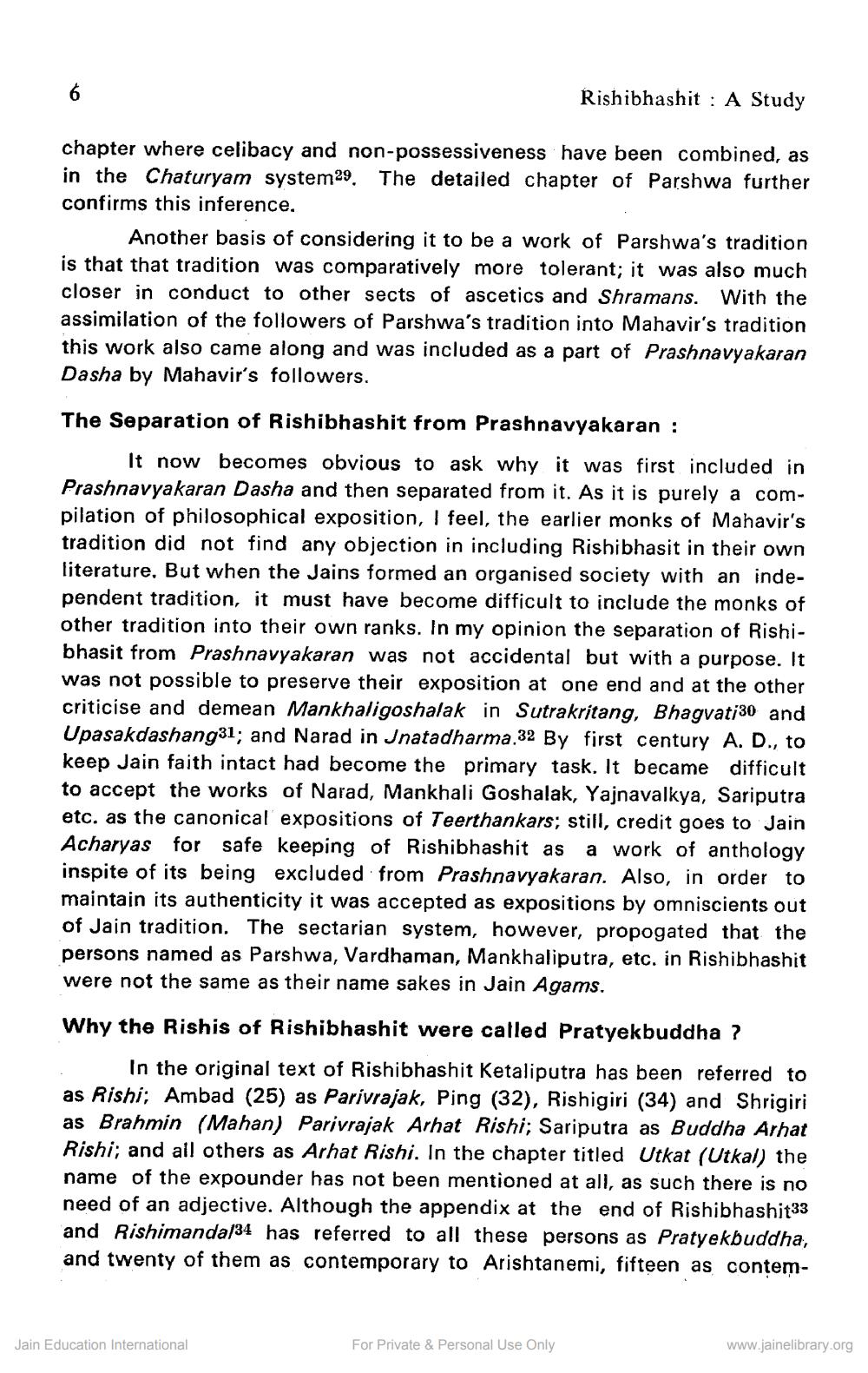________________
Rishibhashit: A Study
chapter where celibacy and non-possessiveness have been combined, as in the Chaturyam system29. The detailed chapter of Parshwa further confirms this inference.
Another basis of considering it to be a work of Parshwa's tradition is that that tradition was comparatively more tolerant; it was also much closer in conduct to other sects of ascetics and Shramans. With the assimilation of the followers of Parshwa's tradition into Mahavir's tradition this work also came along and was included as a part of Prashnavyakaran Dasha by Mahavir's followers.
The Separation of Rishibhashit from Prashnavyakaran :
It now becomes obvious to ask why it was first included in Prashnavyakaran Dasha and then separated from it. As it is purely a compilation of philosophical exposition, I feel, the earlier monks of Mahavir's tradition did not find any objection in including Rishibhasit in their own literature. But when the Jains formed an organised society with an independent tradition, it must have become difficult to include the monks of other tradition into their own ranks. In my opinion the separation of Rishibhasit from Prashnavyakaran was not accidental but with a purpose. It was not possible to preserve their exposition at one end and at the other criticise and demean Mankhaligoshalak in Sutrakritang, Bhagvati30 and Upasakdashang31; and Narad in Jnatadharma.32 By first century A. D., to keep Jain faith intact had become the primary task. It became difficult to accept the works of Narad, Mankhali Goshalak, Yajnavalkya, Sariputra etc. as the canonical expositions of Teerthankars; still, credit goes to Jain Acharyas for safe keeping of Rishibhashit as a work of anthology inspite of its being excluded from Prashnavyakaran. Also, in order to maintain its authenticity it was accepted as expositions by omniscients out of Jain tradition. The sectarian system, however, propogated that the persons named as Parshwa, Vardhaman, Mankhaliputra, etc. in Rishibhashit were not the same as their name sakes in Jain Agams.
Why the Rishis of Rishibhashit were called Pratyekbuddha ?
In the original text of Rishibhashit Ketaliputra has been referred to as Rishi; Ambad (25) as Parivrajak, Ping (32), Rishigiri (34) and Shrigiri as Brahmin (Mahan) Parivrajak Arhat Rishi; Sariputra as Buddha Arhat Rishi; and all others as Arhat Rishi. In the chapter titled Utkat (Utkal) the name of the expounder has not been mentioned at all, as such there is no need of an adjective. Although the appendix at the end of Rishibhashit33 and Rishimanda/34 has referred to all these persons as Pratyekbuddha, and twenty of them as contemporary to Arishtanemi, fifteen as contem
Jain Education International
For Private & Personal Use Only
www.jainelibrary.org




